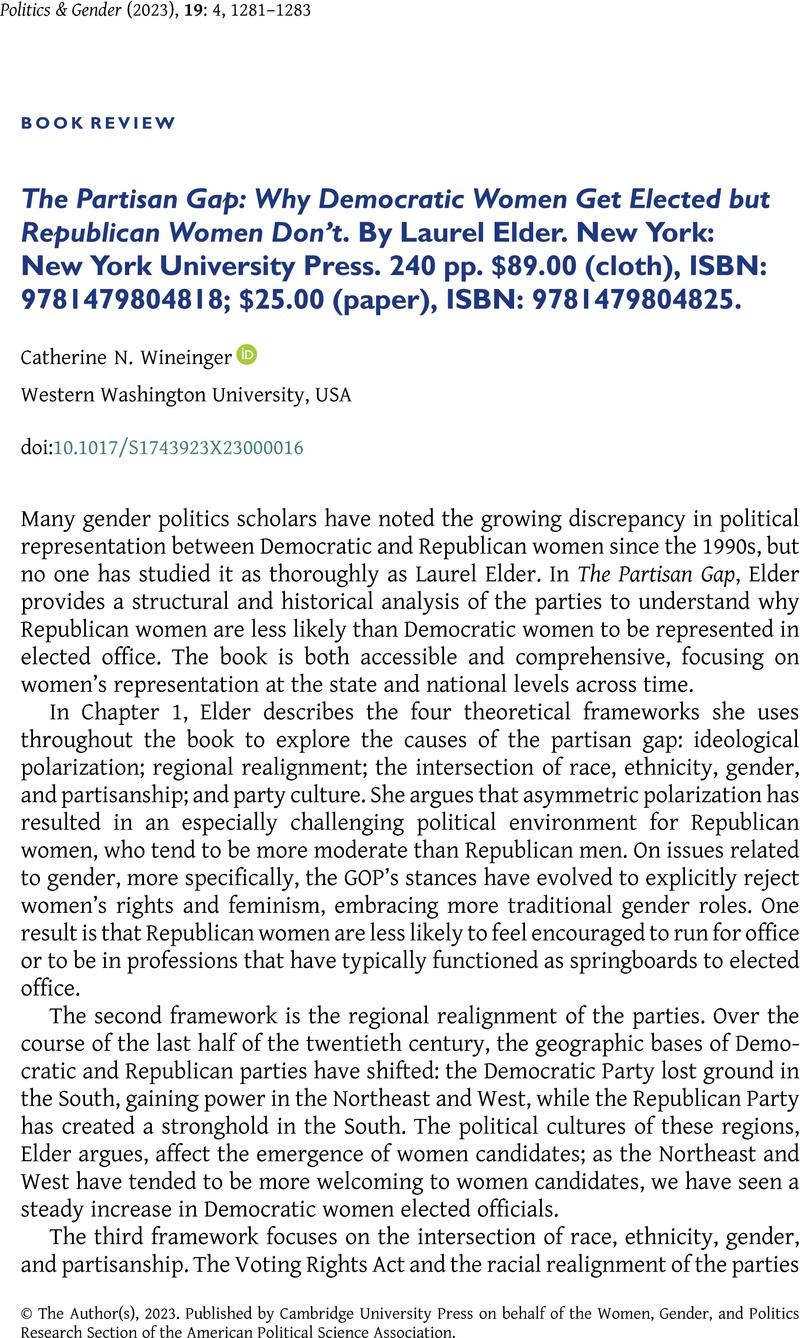No CrossRef data available.
Article contents
The Partisan Gap: Why Democratic Women Get Elected but Republican Women Don’t. By Laurel Elder. New York: New York University Press. 240 pp. $89.00 (cloth), ISBN: 9781479804818; $25.00 (paper), ISBN: 9781479804825.
Review products
The Partisan Gap: Why Democratic Women Get Elected but Republican Women Don’t. By Laurel Elder. New York: New York University Press. 240 pp. $89.00 (cloth), ISBN: 9781479804818; $25.00 (paper), ISBN: 9781479804825.
Published online by Cambridge University Press: 02 March 2023
Abstract
An abstract is not available for this content so a preview has been provided. Please use the Get access link above for information on how to access this content.

- Type
- Book Review
- Information
- Copyright
- © The Author(s), 2023. Published by Cambridge University Press on behalf of the Women, Gender, and Politics Research Section of the American Political Science Association


